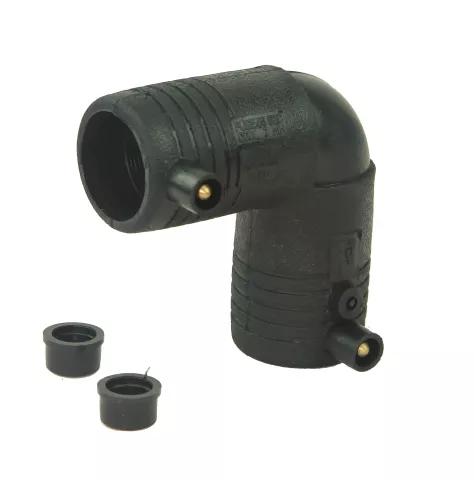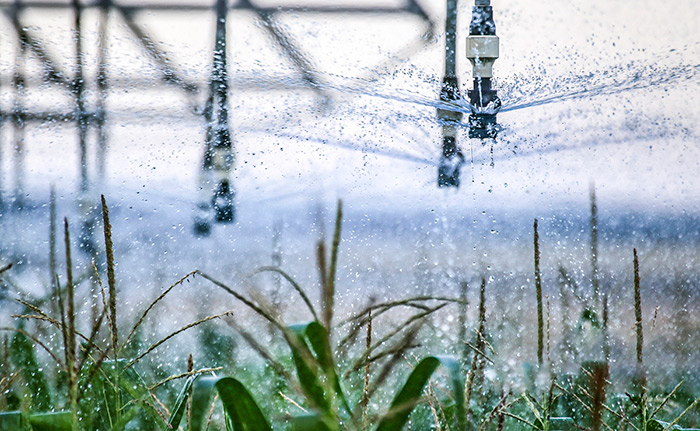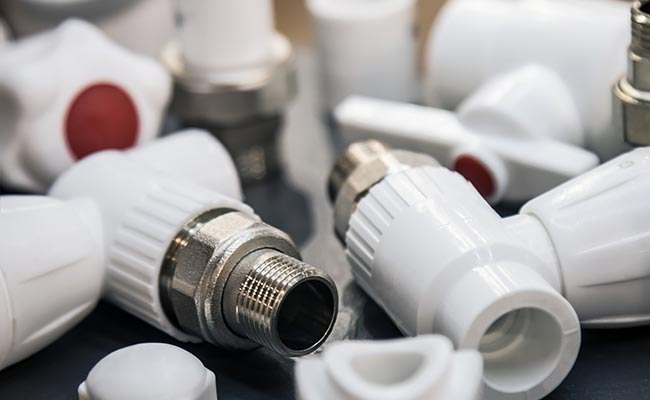
Connecting an HDPE 90 Degree Elbow underground takes care and attention. They want a leak-free joint that lasts for years. The Hdpe Electrofusion 90 Dgree Elbow helps create a strong, reliable bend. When workers follow each step, the water system stays safe and steady.
Key Takeaways
- HDPE 90 Degree Elbows provide strong, leak-free connections that last over 50 years and resist corrosion and ground movement.
- Proper preparation, including cleaning and aligning pipes, plus using the right fusion method like electrofusion, ensures a durable joint.
- Performing safety checks and pressure tests after installation helps catch leaks early and keeps the water system reliable for years.
HDPE 90 Degree Elbow: Purpose and Benefits
What Is an HDPE 90 Degree Elbow?
An HDPE 90 Degree Elbow is a pipe fitting made from high-density polyethylene. It helps change the direction of water flow by 90 degrees in underground piping systems. This elbow connects two pipes at a right angle, making it easy to fit pipes around corners or obstacles. Most HDPE 90 Degree Elbows use strong fusion methods, like butt fusion or electrofusion, to create a leak-free joint. These fittings come in many sizes, from small household pipes to large city water lines. They work well in temperatures from -40°F to 140°F and can handle high pressure.
Tip: Always check that the elbow meets standards like ISO 4427 or ASTM D3261 for safety and quality.
Why Use HDPE 90 Degree Elbow in Underground Water Systems?
HDPE 90 Degree Elbow fittings offer many benefits for underground water systems. They last over 50 years because they resist chemicals and corrosion. Their joints are heat-fused, so leaks are rare. This means less water loss and lower repair costs. HDPE elbows are also lightweight, which makes them easy to move and install. They can handle ground movement and even small earthquakes without cracking.
Here’s a quick comparison:
| Feature | HDPE 90 Degree Elbow | Other Materials (Steel, PVC) |
|---|---|---|
| Lifespan | 50+ years | 20-30 years |
| Leak Resistance | Excellent | Moderate |
| Flexibility | High | Low |
| Maintenance Cost | Low | High |
Cities and farms choose HDPE 90 Degree Elbow fittings because they save money over time. Fewer leaks mean more water gets delivered, and less money is spent on repairs.
Connecting HDPE 90 Degree Elbow: Step-by-Step Guide

Tools and Materials Required
Getting the right tools and materials makes the job easier and safer. Here’s what installers usually need:
- Validated Materials:
- HDPE 90 Degree Elbow fittings that match the pipe size and pressure rating.
- Pipes and fittings that meet standards like ASTM D3261 or ISO 9624.
- Electrofusion fittings with built-in heating coils for strong, leak-proof joints.
- Essential Tools:
- Facing cutters to make sure pipe ends are smooth and square.
- Alignment clamps or hydraulic aligners to keep pipes straight during joining.
- Fusion machines (butt fusion or electrofusion) with temperature controls.
- Pipe cleaning tools, like alcohol wipes or special scrapers.
- Safety Gear:
- Gloves, safety glasses, and protective clothing.
Tip: Always check the manufacturer’s instructions before starting. Using the right equipment helps prevent leaks and weak joints.
Preparing Pipes and Fittings
Preparation is key for a strong, long-lasting connection. Workers should follow these steps:
- Cut the HDPE pipe to the needed length using a pipe cutter.
- Use a facing tool to trim the pipe ends. This makes sure the ends are flat and smooth.
- Clean the pipe ends and the inside of the HDPE 90 Degree Elbow with alcohol wipes. Dirt or grease can weaken the joint.
- Mark the insertion depth on the pipe. This helps with proper alignment.
- Check that the pipes and fittings are dry and free from damage.
Note: Proper cleaning and alignment help avoid leaks and joint failure later.
Making the Connection: Electrofusion, Butt Fusion, and Compression Methods
There are a few ways to connect an HDPE 90 Degree Elbow. Each method has its own strengths.
| Feature | Butt Fusion | Electrofusion |
|---|---|---|
| Joint Strength | As strong as the pipe | Depends on fitting quality |
| Equipment Complexity | High, needs fusion machine | Moderate, uses special fittings |
| Flexibility | Low, needs straight alignment | High, works well for 90° elbows |
| Skill Level Required | High | Moderate |
| Installation Time | Longer | Shorter |
- Butt Fusion:
Workers heat the ends of the pipe and the elbow, then press them together. This method creates a joint as strong as the pipe itself. It works best for straight runs and large projects. - Electrofusion:
This method uses an HDPE 90 Degree Elbow with built-in heating coils. Workers insert the pipe ends, then use a fusion machine to heat the coils. The plastic melts and bonds together. Electrofusion is great for tight spaces and complex angles. - Compression Fittings:
These fittings use mechanical pressure to join the pipe and elbow. They are quick and easy but less common for underground systems that need high strength.
Tip: Electrofusion is often the best choice for connecting elbows in underground water systems. It handles bends and tight spots better than butt fusion.
Safety Checks and Pressure Testing
After making the connection, safety checks and pressure testing help ensure everything works as planned.
- Inspect the joint for gaps, misalignment, or visible damage.
- Let the joint cool fully before moving or burying the pipe.
- Clean the area around the joint to remove dirt or debris.
- Perform a pressure test. Most HDPE 90 Degree Elbow fittings handle pressures from 80 to 160 psi. Follow the standards for your project, like ASTM D3261 or ISO 4427.
- Watch for leaks during the test. If the joint holds steady, the connection is good.
- Record the test results for future reference.
Reminder: Proper installation and testing help the system last over 50 years, even in tough underground conditions.
Best Practices for HDPE 90 Degree Elbow Installation
Tips for Leak-Free and Durable Connections
Getting a strong, leak-free joint starts with careful planning. Installers should always select pipes and fittings that meet standards like ASTM D3035. They need to clean and prepare pipe surfaces before joining. Using butt fusion or electrofusion welding creates a bond that lasts for decades. Workers should check that fusion machines are calibrated and that the temperature stays between 400–450°F. Hydrostatic pressure testing at 1.5 times the system’s normal pressure helps confirm a tight seal. Good bedding, like sand or fine gravel, keeps the HDPE 90 Degree Elbow stable underground. Backfilling in layers and compacting the soil prevents shifting and damage.
Tip: Recording installation details and testing results helps with future maintenance and repairs.
Common Mistakes to Avoid
Some mistakes can lead to leaks or weak joints. Workers sometimes skip cleaning the pipe ends, which lets dirt weaken the bond. Misaligned pipes can cause stress and cracks. Using the wrong temperature or pressure during fusion may result in poor bonding. Rushing the backfill process or using rocky soil can damage the fitting. Ignoring manufacturer instructions often leads to problems later.
Troubleshooting Connection Issues
If a joint leaks or fails, installers should check the fusion welds using visual checks or ultrasonic testing. They need to look for cracks or signs of stress. If the pipe ends are not square, cutting and refacing may help. Keeping fusion surfaces clean and following the right heating times usually solves most problems. Regular inspections and accurate records help spot issues early and keep the system running smoothly.
Every installer should follow each step for a strong, leak-free joint. Good preparation, careful fusion, and pressure testing help the system last. Safety gear and quality checks matter. When workers pay attention to details, underground water systems stay reliable for years.
FAQ
How long does an HDPE 90 Degree Elbow last underground?
Most HDPE elbows, like PNTEK’s, last up to 50 years. They resist corrosion and handle tough soil conditions well.
Can you reuse an HDPE 90 Degree Elbow after removal?
No, installers should not reuse fused HDPE elbows. The joint loses strength after removal. Always use a new fitting for safety.
What is the best way to check for leaks after installation?
Pressure testing works best. Installers fill the pipe with water, then watch for drops in pressure or visible leaks at the joint.
Post time: Jun-14-2025




